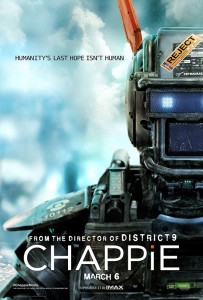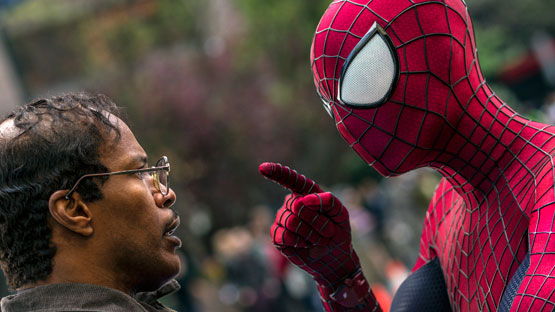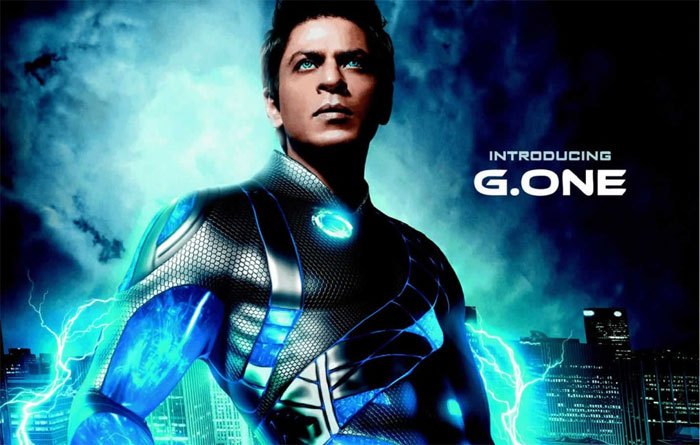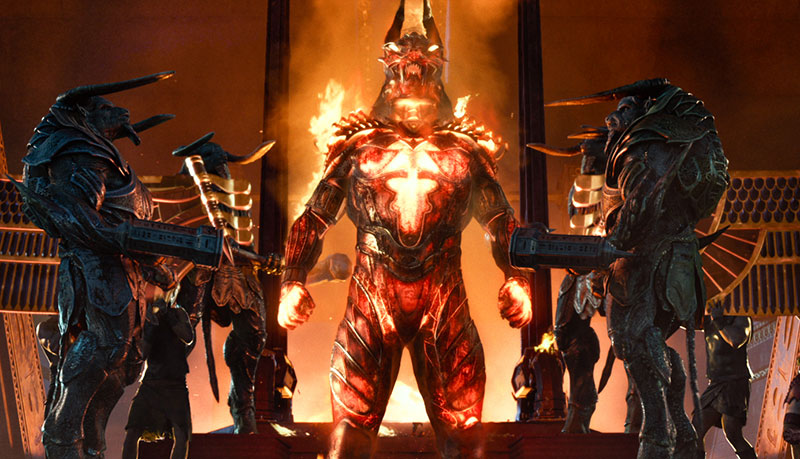In the near future, crime is patrolled by an oppressive mechanized police force. But now, the people are fighting back. When one police droid, Chappie, is stolen and given new programming, he becomes the first robot with the ability to think and feel for himself. As powerful, destructive forces start to see Chappie as a danger to mankind and order, they will stop at nothing to maintain the status quo and ensure that Chappie is the last of his kind.

Because the film contains so much action – helicopters, flipping cars, not to mention actors in suits who would be replaced with CG characters – the stunt team had the art department build mini-sets to scale to help plan the complicated sequences.
Columbia Pictures and MRC present in association with LStar Capital a Kinberg Genre production, Chappie. Starring Sharlto Copley, Dev Patel, NINJA and ¥O-LANDI VI$$ER, Jose Pablo Cantillo, with Sigourney Weaver and Hugh Jackman. Directed by Neill Blomkamp.
In his films District 9 and Elysium, filmmaker Neill Blomkamp invited viewers to reimagine our world. In those films, Blomkamp combined pulsing action with a social conscience that made the films unforgettable.
Blomkamp’s road to Chappie began more than 10 years ago. As a young director and visual effects artist, Blomkamp created a show reel of fake commercials that would show agents the kind of work he was capable of producing. “I was just messing around, and I designed that robot in 2003 in Lightwave,” he explains.
So, long before principal photography began, the filmmakers were deep into designing the look of Chappie on screen. The process fell to teams at two companies: Image Engine, where the visual effects were overseen by Visual Effects Supervisor Chris Harvey, and WETA Workshop, where the physical effects team was headed by WETA Specialty Props Effects Supervisor Joe Dunckley.
Two-and-a-half years before filming began, the filmmakers shot test footage in Johannesburg to show that their plan would work. With the proof of concept a success and the film greenlit, Image Engine and the team at WETA Workshop worked together, back and forth, refining and perfecting the design.
The lead role of Chappie – a Scout who is given consciousness by artificial intelligence – is played by Sharlto Copley. Copley performed the role on camera, performing in each scene opposite the other characters. Not only did this allow Chappie to feel like a very real and authentic character, but it helped the other actors to bring their characters out to the fullest. . Later, in post-production, Blomkamp worked with the wizards at the VFX facility Image Engine to bring Chappie to fruition, painting the robot Chappie over Copley’s performance and creating the robot from Copley’s movements.
Taking on the role of the film’s villain, Vincent Moore, is Hugh Jackman. Because he rarely plays a villainous role, Jackman relished the opportunity to play a realistic villain with a justifiable point of view. “The best villains don’t think they’re villains,” he says. Kinberg, also a producer of the recent X-Men films, has worked with Jackman on four films.
Vincent’s opposite is Deon Wilson, Chappie’s creator, played by Dev Patel. A young engineer developing artificial intelligence, he’s in direct opposition to Jackman’s Vincent. Kinberg says that Patel was the first and, ultimately, only choice to play the role.
For this film, Blomkamp returns to his home town of Johannesburg, the setting for his breakthrough film, District 9. “At first, I didn’t want to set the film there, because District 9 was set there,” he says.
For many locations, the production team relied on Blomkamp’s personal knowledge of the city. “As we were looking for environments for Hippo’s lair, Neill mentioned his home, and when we looked at it, it was the place he wanted to shoot,” Jules Cook, the film’s production designer recalls. “We turned this semi-derelict environment into a gang den, filling the pool with guns – we brought the whole space down. When Neill and his sister arrived there, I think they were a bit taken aback.”
Diana Cilliers, who previously collaborated with Blomkamp on District 9, oversaw the costume design. She says that despite the setting in the same city, the costume design came from a very different aesthetic in the two films.




